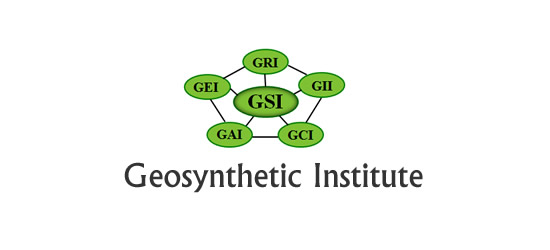
 On May 24, Interwrap’s Jimmie Eloff was discussing a canal lining option with an engineer in Idaho. The next morning, Eloff contacted the engineer with a woven-coated geomembrane specification from the Geosynthetic Research Institute (GRI). The engineer told him he’d looked for that very type of standard specification from GRI but had been unable to find one.
On May 24, Interwrap’s Jimmie Eloff was discussing a canal lining option with an engineer in Idaho. The next morning, Eloff contacted the engineer with a woven-coated geomembrane specification from the Geosynthetic Research Institute (GRI). The engineer told him he’d looked for that very type of standard specification from GRI but had been unable to find one.
GRI had just officially approved the new specification for public release on May 25. Interwrap was one of the first companies to know, having worked with other manufacturers and GRI to establish this long-needed specification.
When the engineer in Idaho searched, GRI hadn’t yet posted the file publicly. (All GRI specifications are openly available.) Interwrap could now supply a copy, adding the very weight of influence and quality assurance to their material that the engineer had sought.
Additionally, the company operates a GAI-LAP accredited laboratory in a manufacturing facility. The Geosynthetic Accredication Institute – Laboratory Accreditation Program, like GRI, is part of the Geosynthetic Institute.
WOVEN-COATED GEOMEMBRANE
The GRI-GM30 standard specification is officially titled “Test Methods, Test Properties and Testing Frequency for Coated Tape Polyethylene (cPE) Barriers.”
GM30 joins 16 other well-known specifications from GRI. The other specifications encompass most other standard barrier options, with specs existing for HDPE, LLDPE, fPP and fPP-R, CSPE, and EPDM geomembranes.
With GM30, containment barrier options continue to expande nicely. The addition of a woven-coated geomembrane recognizes the continuing growth of manufacturing quality control and consistency in the international industry.
“What this does is takes a product that was potentially viewed as a less-technical product—a standard woven coated—and by adding a single film laminate to at least one side really takes it to the next level,” says Eloff. “It takes it from being a pile cover or a hay cover and allows us to put it in more critical applications: water containment, wastewater, canal linings. It opens the door to putting [a woven-coated geomembrane] into applications it might not have been considered for in the past.”
Eloff’s anecdote of his discussion with the engineer in Idaho provides the greatest proof of the beneficial impact a GRI specification can have on the entire field. The material Eloff discussed on May 24—RhinoMat® 750—was potentially not able to be considered for a canal lining project. On May 25, it could be. The material hadn’t changed; but the recognized quality assurance that could be provided to a buyer or specifier had.
“It sets the standard in the industry, not only for Interwrap but for all manufacturers,” Eloff says, “and gives engineers confidence in the product they are buying or specifying…. Having a woven-coated specification, or at least a definition, gives us the ability to approach the market in an entirely different manner.”
SETTING THE STANDARD
GM30 establishes some classes of material thickness (40, 30, and 24 mil) and standard properties, rooted in ASTM tests, such as weight, CBR puncture, strip tensile elongation, and hydostatic resistance.
The 9-page specification includes 10 sections:
- Scope
- Referenced Documents
- Definitions
- Material Classification and Formulation
- Physical, Mechanical and Endurance Property Requirements
- Workmanship and Appearance
- MQC Sampling
- MQC Retest and Rejection
- Packaging and Marketing
- Certification
Three tables are included, providing baselines for American measurements, SI measurements, and “Required Degree of Survivability as a Function of Site Conditions.”
DOWNLOAD A COPY OF GRI-GM30
INDUSTRY WORKING TOGETHER
“Having GM30 defines what quality a woven-coated product should look like,” Eloff says. “Don’t get me wrong—I want to sell it all! But other manufacturers can achieve this too, and that’s good. The goal has been to define what the industry expects. We have that now.”
For the manufacturers who worked to get this specification developed, the drafting period and wait for finalization may have seemed considerable. For GRI, however, it was nearly as clean as a specification development process can be. There were only five revisions in the process.
The spec will be reviewed within two years, per GRI rules; but it may be updated at anytime within that period. The dialogue among Geosynthetic Institute members and specification-development partners is, in general, always in motion.
It’s a testament to how hard geosynthetics manufacturers work to set standards for their in-house quality processes and assurance of product consistency, and how hard they work together to ensure that the general engineering and construction communities can depend on the materials delivered into the field.
GM30 provides that backing for woven-coated geomembrane in wide variety of applications.
**
For information on GRI’s specifications and additional resources, visit www.geosynthetic-institute.org.
For more information on Interwrap’s products, applications, and services, visit www.interwrap.com.











